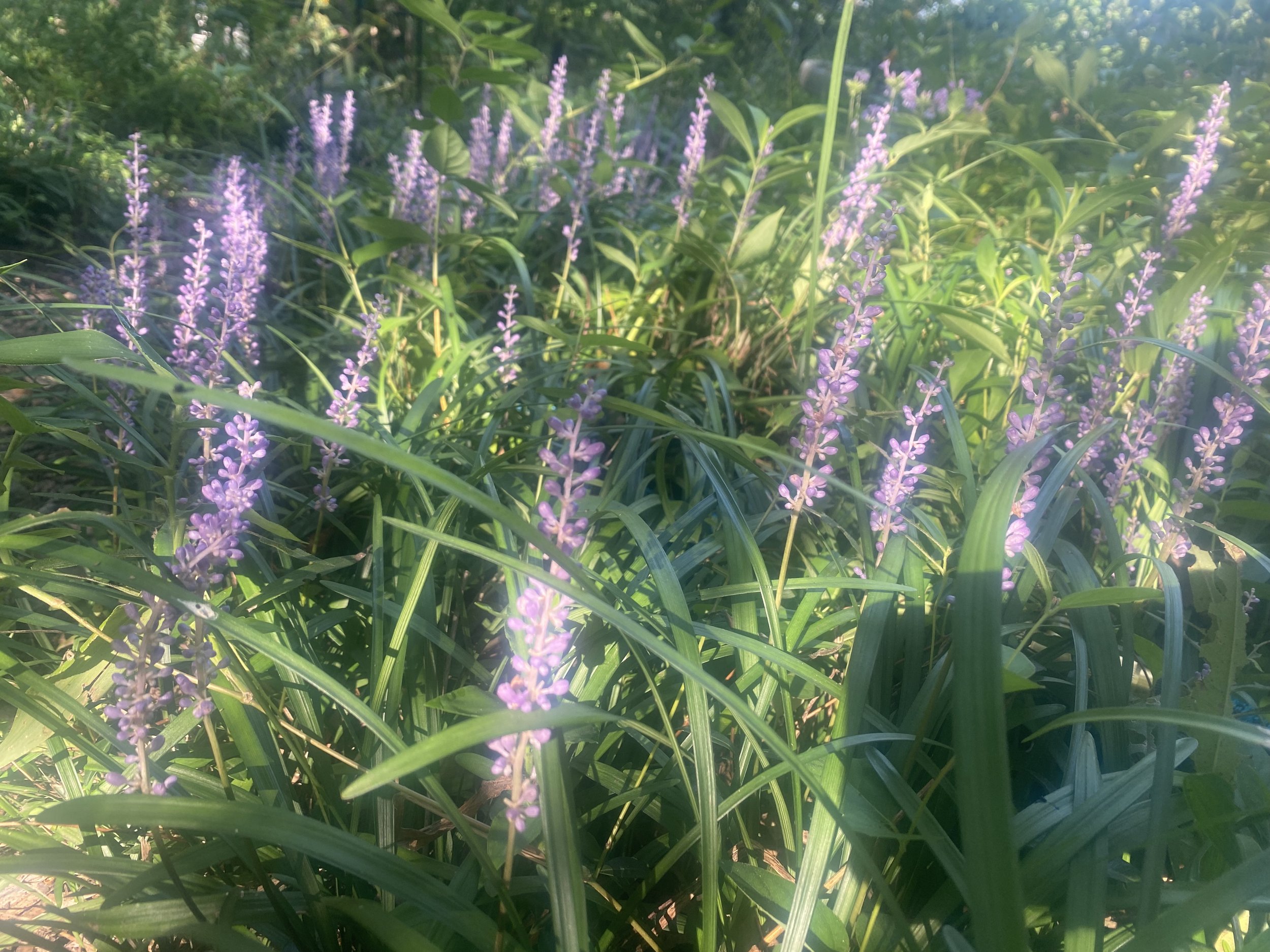Monkey Grass
/Monkey grass is an excellent border plant providing pollinators food mid-summer. (charlotte ekker wiggins photo)
Monkey Grass
Liriope, also known as Lilyturf or Monkey Grass, is a popular ornamental plant often used in gardens for its attractive foliage and low maintenance requirements. I love Liriope to mark my paths and borders, and to help with soil erosion, a constant battle gardening on a hillside.
Here are some advantages and disadvantages of using Liriope in your garden:
Advantages:
Low Maintenance: Liriope is relatively low-maintenance. It requires minimal care once established, making it a great choice for busy gardeners or those new to gardening.
Ornamental Value: Liriope's grass-like leaves come in various shades of green and sometimes variegated patterns, adding visual interest to your garden. Some varieties also produce small spikes of lavender or white flowers, adding a touch of color.
Versatility: Liriope is versatile in terms of its uses. It can be used as ground cover, edging, or in mass plantings. It's also suitable for both sunny and partially shaded areas.
Erosion Control: Due to its spreading nature and dense root system, Liriope can help control soil erosion on slopes and banks.
Drought Tolerance: Once established, Liriope is generally drought-tolerant and can survive periods of dry weather without much trouble.
Deer Resistance: Many varieties of Liriope are relatively resistant to deer browsing, making it a good choice in areas with deer populations.
Pollinator Food: Liriope blooms mid-summer where I live and provides food for bees and other pollinators when not much else does.
Disadvantages:
Invasiveness: Liriope can sometimes become invasive in prime growing conditions. It spreads through underground rhizomes, and in some cases, it can outcompete other plants and become difficult to control.
Slow Establishment: Liriope can take a while to establish and fill in, especially when planted from small divisions.
Limited Flowering Period: While some Liriope varieties produce small spikes of flowers, the flowering period is relatively short, and the flowers may not be as showy as those of other plants.
Overcrowding: If not properly managed, Liriope can sometimes become overcrowded, leading to a less attractive appearance and reduced growth.
Spread into Unwanted Areas: The rhizomes of Liriope can spread beyond where you initially planted them. This can sometimes lead to the plant appearing in areas where you didn't intend it to grow.
Winter Appearance: In colder climates, Liriope's foliage can become brown and wilted during the winter months.
Some recommend cutting Liriope back in spring but I don’t find that necessary. It can look a little bedraggled coming out of winter but the new growth soon turns green and lush again.












